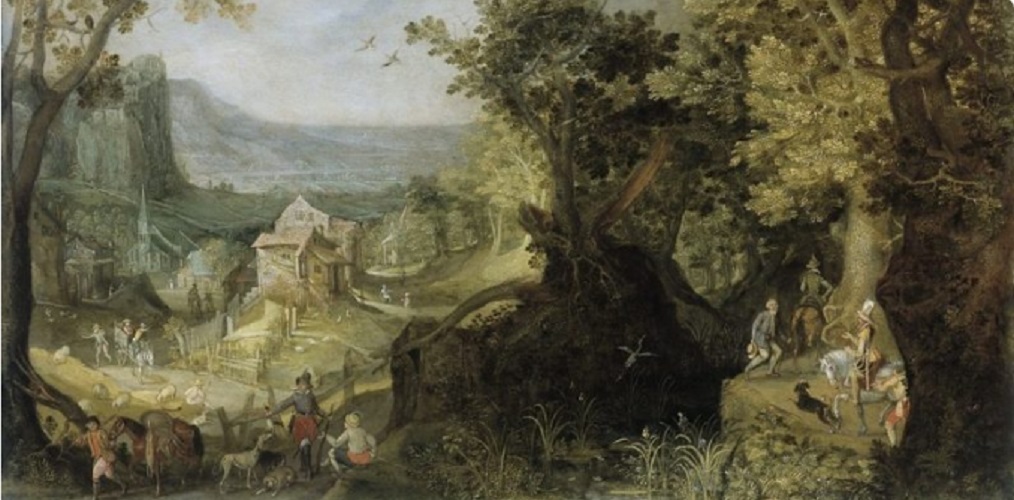What is the baroque?
We explain what Baroque is and the main topics it covers. Also, how was the painting and literature of this period.
-
What is the baroque?
The baroque was a period in the history of culture in the West , which covered the entire 17th and early 18th centuries, extending more or less depending on the particular historical process of each country. This period was characterized by a change in the way of conceiving art (the “baroque style”), which had an impact on numerous areas of culture and knowledge, such as letters, architecture , fine arts and even philosophy .
Emerged in a time of tensions between the Catholic and Protestant countries , between absolutist and parliamentary monarchies, the baroque took place in Western Europe and in some of its colonies, such as Latin America, and constituted the intermediate step between Mannerism and Rococo .
Its origin, however, is located in Italy , during the period known as Seicento , and its name was long used in a derogatory manner, to refer to something ornate, capricious, misleading.
After the nineteenth century, the term “baroque” was revalued and is currently used not only to refer to this period, but for any artistic manifestation that goes against the values of classicism.
The baroque period is usually classified into three different moments: primitive (1580 to 1630), full (1630 to 1680) and late (1680 to 1750). Throughout them, art won in refinement and decoration, cultivating a taste for anecdotal and surprising, for realism and illusions. This is often interpreted as a greater crudeness in the confrontation between artist and reality.
-
Baroque themes

The name “baroque” according to some theories comes from the word in Portuguese used for pearls that had some deformity or irregularity (equivalent to “barruecas” in Spanish). Hence, the name was initially used to refer to a certain ornate, grandiloquent, excessive artistic style.
Later it was appreciated as a “degenerate” (according to Jackob Burckhardt) of Renaissance, to end up being considered the negation of the classic: where the latter is masculine, rational and Apollonian, the baroque was feminine, irrational and dionysian. These are two opposite ways of conceiving art and culture .
The baroque, then, radically changed the way of doing art and thinking about culture, expressing itself mainly in two main ways:
- É emphasis on reality . Attention is paid to the mundane aspect of life, to everyday life and the ephemeral, which led to the “vulgarization” or worldliness of the religious imaginary in Catholic countries.
- Grandiloquent vision . The concepts of the national and the religious were exalted as expressions of political power, thus producing monumental, lavish and ornate works, often with some propaganda content in favor of the aristocracy and clergy.
The baroque was thus a culture of the image, which aspired to generate the total work of art: one that staged the dominant power (the Church and the monarchy), but through deception and devices that were summed up in the theatrum phrase mundi (“The world is a theater”).
-
Baroque painting

The painting Baroque was one of the most favored artistic expressions in the period and greater diversity exhibited in each of its geographical manifestations. Their styles can be classified into two opposing slopes:
- Naturalism . A style that is based on the observation and reproduction of nature , but accommodating moral or aesthetic guidelines of the artist, when not very free interpretations made of the copied object. This style is heir to the tenebrism (taste for chiaroscuros) of Caravaggio, so it is also known as Caravaggismo.
- Classicism . The opposite style to naturalism and its influences was classicism, which was as realistic as that, but was due to a more rational conception, in which drawing over color predominated , and the works were closed and without the baroque diagonal slashes.
-
Baroque literature

The literature Baroque was highly determined by the Catholic Counter Reformation and absolutist values, so dominant in her depressed and pessimistic view of existence , in which everything that exists is vain illusion or dream, and life attitude is Doubt, disappointment and prudence.
The main literary genres of Baroque were:
- Novel . With Don Quixote as an example, the possibility of satire and mockery arises in this genre, using high-sounding language full of rhetorical figures , as well as mythological allusions. The picaresque novel is booming right now.
- Bucolic poetry . The poetry pastoralist, profusely cultivated in ancient Rome, comes alive in the Baroque and pastoral love, popular icon and representatives of rural life of ordinary people, gaining strength in the popular imagination.
- Theater . The theater , especially in the Spain of the so-called Golden Age, reaches one of its highest points in the Baroque, with satirical comedies and sacramental cars, or dramatizations of biblical passages.
-
Baroque authors and representatives
A partial list of the main Baroque authors includes:
Literature:
- Miguel de Cervantes
- Calderón de la Barca
- Lope de Vega
- Tirso de Molina
- Luis de Gongora
- Francisco de Quevedo
- Sor Juana Ines De La Cruz
- John donne
- William Shakespeare
- Laurence Sterne
Painting:
- Caravaggio
- Pedro Pablo Rubens
- Diego Velásquez
- Rembrandt
- Johannes Vermeer
Music:
- Johann Sebastian Bach
- Antonio Vivaldi
- Georg Friedrich Handel





